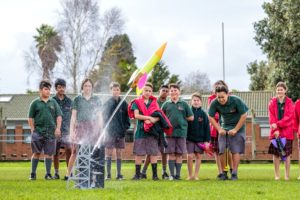Transformation delivers priorities
On 1 October, Engineering New Zealand celebrated their first birthday. However, the pedigree stretches back far more than a year: previously known as IPENZ, there is a proud 100-year history representing engineers.
Several years ago, members were asked what they wanted from their professional body, and they said greater recognition, influence, credibility and connection. So, transformation took place to deliver these priorities.
Recognition means appreciating the value that engineers bring. It’s not about fame or boosterism – it’s about our society genuinely recognising engineers for the work that they do and the genuine difference they make to everyone’s lives and to New Zealand.
Credibility for Engineering New Zealand means doing the right thing, doing what you said you’d do, and doing the best job possible.
For Engineering New Zealand credibility means standing up for quality, raising the bar for engineering professionals and making sure everyone is accountable. It also means having robust processes and systems, so that everyone knows where they stand.
Connection means creating networks together to be more powerful – networks across industries, with like professions and between members. Networks fill in blind spots and help create movements for change.
Influence means leverage: leverage to affect decision and policy in the areas engineers’ care about or think are important to New Zealand. This means not just central and local government but other spheres of decision making as well.
As part of the new strategy, based on these four pillars, on 1 October 2017 there was the name change and a new, more inclusive Membership Pathway.
This new pathway creates a professional home for engineers previously unrecognised by membership classes, including chief executives and other leaders who’ve stepped away from day-to-day technical work. It makes space for academics, and it genuinely recognises technicians and technologists, as well as engineering geologists.
Realising a new strategy has also meant launching several new programmes and initiatives.
Additionally, Engineering New Zealand is more deliberate in speaking out on engineering issues that matter to members and New Zealanders.
As well as engaging more with the media, in August 2018 Engineering New Zealand launched a thought-leadership publication, Engineering a Better New Zealand, which pulls together an expert engineering view on two key challenges facing New Zealand: seismic resilience and water.
In Engineering a Better New Zealand, there is a call for a new regulatory approach to existing buildings, to better protect people from severe earthquakes.
Engineering New Zealand supports the Government’s move to fix our broken drinking water system, and the community needs to place a greater value on safe water.
And there is a look at lessons from recent floods and a call for hard decisions to be made in the face of climate change. At the heart of Engineering a Better New Zealand is resilience, and how risk is thought about.
In April 2018, the Diversity Agenda was launched, a provocative campaign in collaboration with the New Zealand Institute of Architects and ACENZ that calls for increased representation of women in engineering and architecture.
The campaign has an ambitious goal of getting 20 percent more women in engineering and architecture by 2021. It asked firms to sign up to this commitment and to a six-point code or tikanga. So far, more than 75 engineering or architecture firms has signed up, well beyond our initial targets.
The Diversity Agenda has been supported by such publications as this one, New Zealand Manufacturer with women engineers being prominently profiled.
There has also been a revamp of the programme to attract young people into engineering. The new initiative in the school space is called the Wonder Project. It aims to spark a curiosity in children about the possibilities and excitement STEM provides and to show them it’s creative and fun.
The first phase is based around a rocket challenge, which has been piloted this year and will go into 200 schools next year. This phase is particularly targeting girls, Māori and Pasifika, and low-decile schools.
All these programmes run alongside the support provided to members, through branch networks around the country, technical groups, engineering practice advice and competence assessments.



